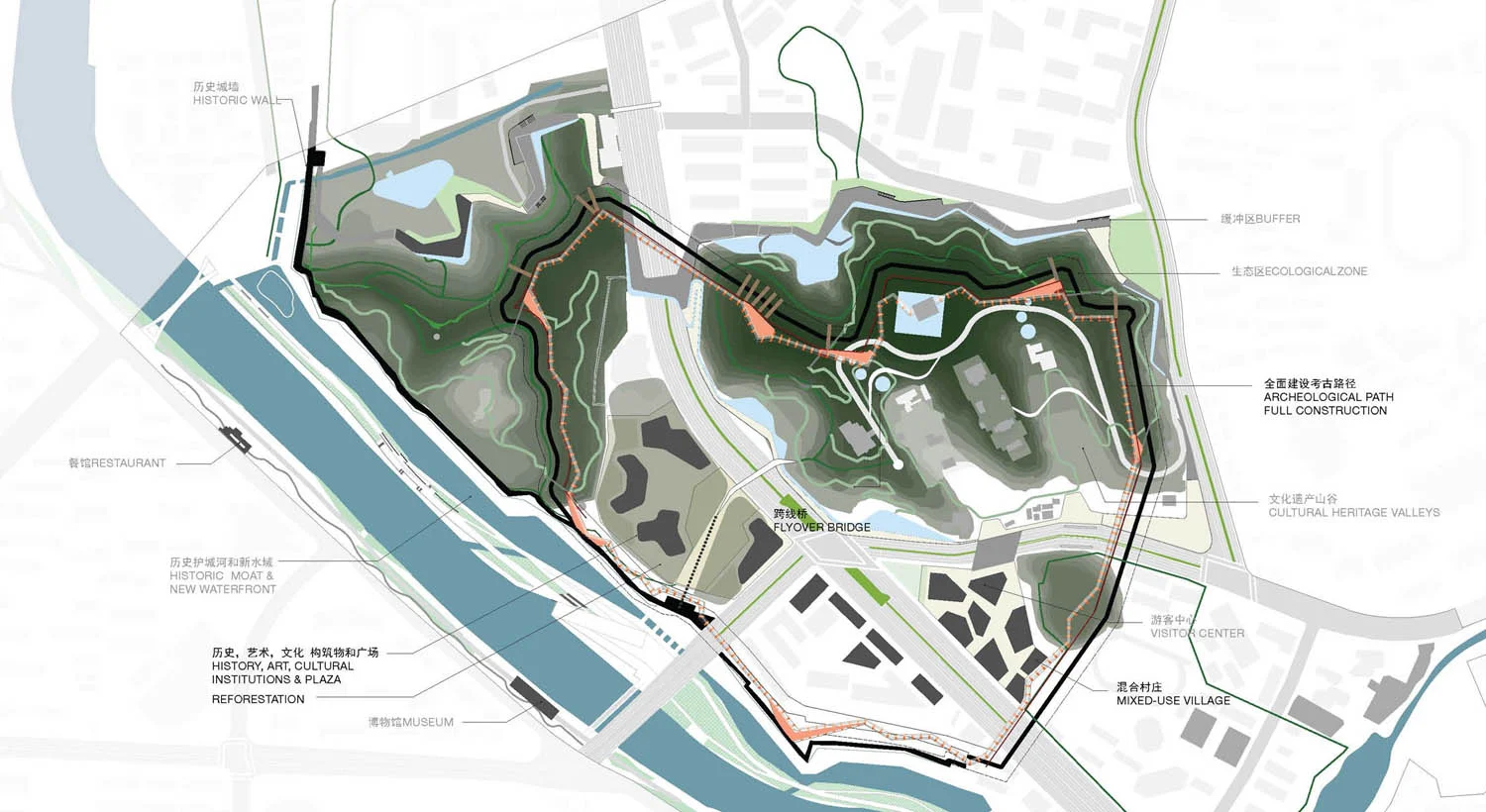Conceptual Planning and Design of Stone Town Historic Park
Nanjing, China
First, the mountains; second, the waters; and then the city.
This important distinction - that the first history of this significant site is the natural history of mountains and waters - has guided us as we consider the planning and design of Qingliangshan Stone Town Heritage Park. Stone Town was founded in a strategic location on the low slopes at the southern end of the small chain of hills and mountains that crawl along the western edge of Nanjing. The Dongwu wall, on which this competition is focused, was largely built along the lower slopes of these mountains. Constructing the walls about 2/3 of the way up the hill provided a defensive strategy that both allowed lofty views across the territory that would allow views to approaching adversaries and made it difficult for those adversaries to attach the wall as it was situated above them on steep slopes that are difficult to ascent.
Stone Town’s situation alongside the great Yangtze River was also essential to the supreme logic of its founders. The river served as a moat that protected the city from the west. Although over time the waters at Qingliangshan have shifted, the relationship of the historic walls that enclosed Stone Town have to those waters remains essential.
Collaborators: L + A Landscape Architecture: Ron Henderson, Tanya Kelley, Kate Dana, Que Zhengqing
Architects: Thurlow Small Architecture
Submitted: November 2013




















